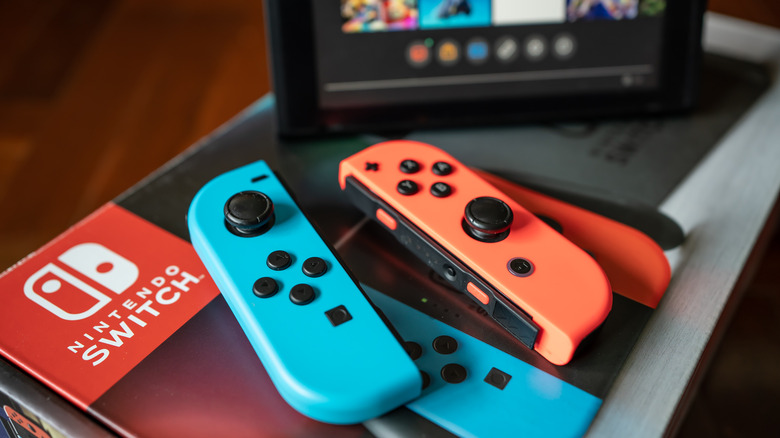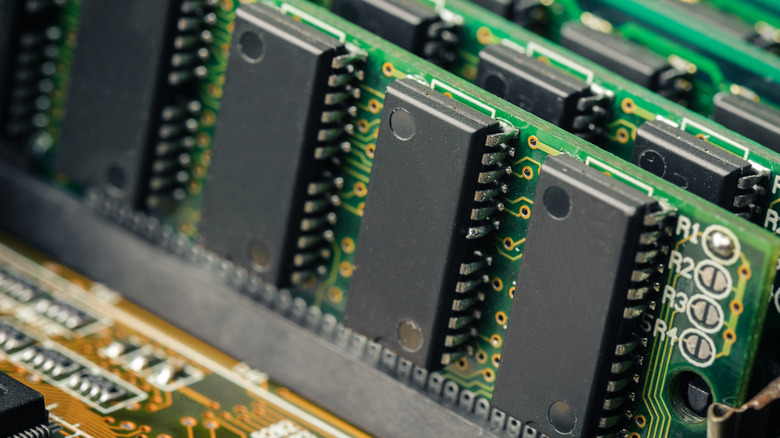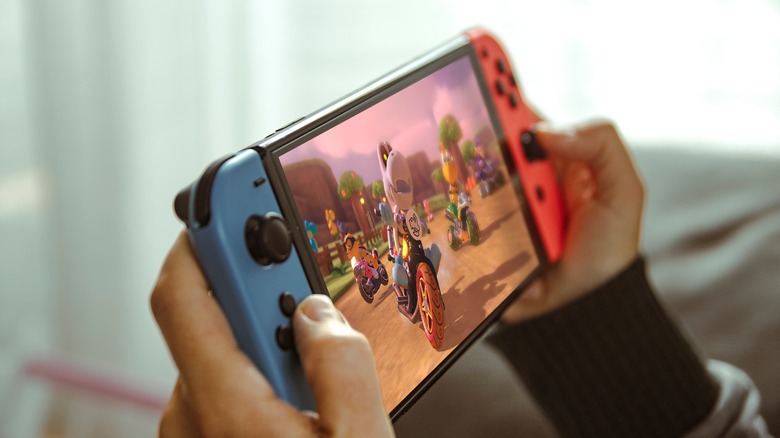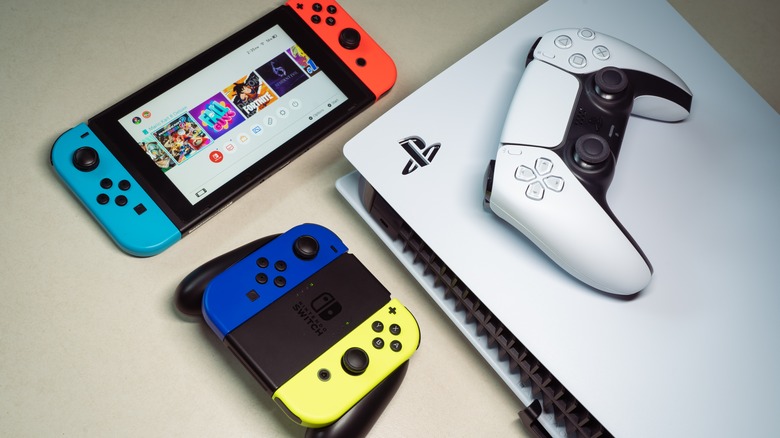
Wachiwit/Shutterstock
Ask the average Nintendo Switch owner if they’re satisfied with its performance, and the answer will likely be a resounding yes. The hybrid handheld gaming console captured the world’s imagination when it was released in 2017 and, by the end of 2022, had become the third best-selling video game console of all time. Even with all its success, many have questioned the Switch’s 4GB of random access memory (RAM), wondering if it’s enough for smooth gameplay and efficient multitasking.
What many don’t understand is that high RAM doesn’t make or break a gaming console. While RAM does play an important role in things like a console’s loading times and ability to handle complex graphics, it’s just one component that contributes to a console’s overall performance. If you own a Switch or have played games on the console, you know it generally operates smoothly and efficiently despite having lower RAM than more powerful gaming systems like the PlayStation or Xbox. That’s because the numbers don’t tell us everything — let’s take a look at why.
How RAM works

Norgal/Getty Images
Understanding how RAM works is the first step to understanding why 4GB of RAM works well for the Nintendo Switch. You can think of RAM as a bridge between the Switch’s CPU (central processing unit) and a game’s data. It acts as a storage and retrieval system, storing and providing the data and instructions the CPU needs in real-time. Since it has a direct impact on the user experience and how well a console performs, it’s considered essential in balancing processing power and gameplay fluidity.
From storing and delivering game elements like character models and sound clips to allowing consoles to switch between games and online content without a hitch, RAM has a significant impact on gaming performance. In that way, the statement «the more RAM, the better» is true. That’s because games that use more RAM can support more intensive graphics, more detailed environments, and faster rendering. RAM is also hard at work when you save your current process in a game, and it’s why your console remembers your saved settings and other relevant data, making it easy for you to go from one game to another without losing progress.
How 4GB of RAM fuels the Nintendo Switch

Juan Ci/Shutterstock
Nintendo made a strategic decision to focus on innovative gameplay instead of chasing the highest specs when creating the Switch, prioritizing unique affordability and gaming experiences. A big part of that was including 4GB of RAM — 3GB for games and applications and 1GB for essential system functions.
The console’s RAM is directly integrated into its system-on-a-chip (SOC) architecture, reducing latency and improving data transfer speeds between the RAM and the console’s CPU and GPU (graphics processing unit) while enhancing overall performance and optimizing resource allocation. The fluid interaction between RAM, CPU, and GPU, along with the Switch’s software optimization, allows it to use the 4GB of RAM effectively, resulting in the Switch’s excellent performance and responsiveness.
You can see how well Nintendo’s approach works when looking at how the Switch manages RAM in different game modes. In docked mode, the system dedicates additional RAM to support high-definition graphics and more demanding computing tasks. In contrast, handheld mode fine-tunes RAM usage to enhance energy efficiency and prolong battery life.
Moreover, the Switch’s OS uses intelligent memory management techniques to dynamically adjust allocations to maintain peak performance without lag, and its unified memory architecture (UMA) enables efficient shared memory access for both the CPU and GPU. While the Switch offers some customization options since the RAM is built into the console, you can’t upgrade or expand it.
Switch’s RAM compared to other consoles

Wachiwit/Shutterstock
At first glance, the Nintendo Switch may seem woefully underpowered compared to other gaming consoles; however, anyone who’s spent time playing the console will agree that it performs well. The console’s balance of hardware and software allows it to punch above its weight. Anyone who’s followed Nintendo over the years knows the video game giant has always marched to the beat of its own drum, and there’s no better example of this philosophy than the Switch.
When it comes to handheld consoles, the Switch’s RAM stacks up well, surpassing older devices like the PlayStation Vita that had 1GB RAM or less. As a result, the Switch offers a richer gaming experience than traditional handheld devices. However, there’s a noticeable difference when we compare it to the newer Steam Deck. The Steam Deck boasts 16GB, making it a more powerful device on paper.
As far as consoles like the PlayStation 4, Xbox One, PlayStation 5, and Xbox Series X go, the Switch’s 4GB RAM may appear lacking compared to the 8GB RAM or more these consoles have. Still, it’s important to keep in mind that the Switch focuses on giving players a versatile gaming experience, while the PlayStation and Xbox emphasize high-fidelity graphics and performance.
While RAM is, without a doubt, important, it’s not the only factor that defines the gaming experience. Other elements like the CPU, GPU, game optimization, and the console’s user interface also play significant roles. The Nintendo Switch’s success lies in how well all these components work together to deliver a unique and enjoyable gaming experience despite having less RAM than other consoles.